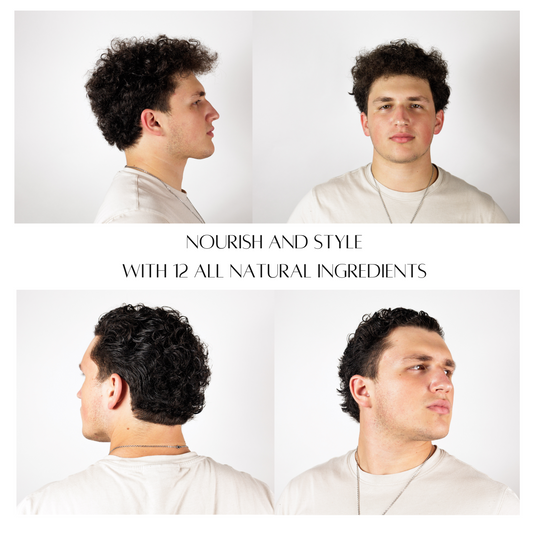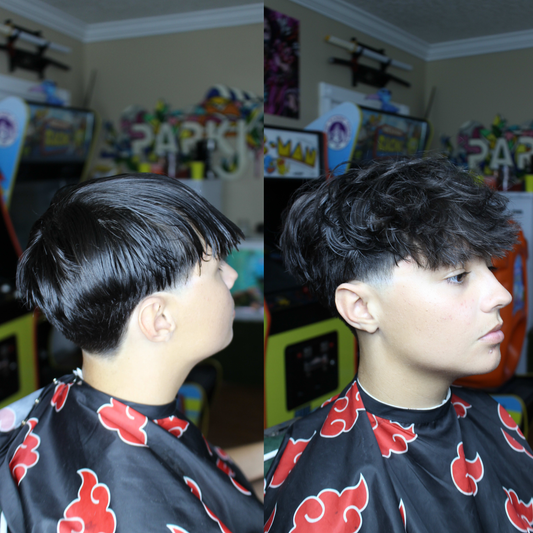The Contemporary Man's Handbook of Hair Grooming: Technique, Style, and Science
In the modern world, grooming is a representation of one's personal hygiene, self-
respect, and health more than merely appearance.
Successful male grooming is built on an understanding of the science underlying hair and scalp health, whether you're trying to combat hair loss, grow out your hair, or just improve your daily routine. This is your go-to guide, simplified and refined, to help you confidently maintain your mane.
1. The Basis: Health and Hygiene of the Scalp
Literally, hair health begins from the root. Sebum, an oil that hydrates and shields the
skin, is produced by your scalp. Dandruff, odor, and even infection can result from the
combination of oil, sweat, debris, and product buildup when it is not properly washed.
Method of Washing:
For oily hair, shampoo every day.
To preserve natural oils in curly, brittle, or graying hair, do this once a week.
Avoid over-washing since it removes moisture and causes too much oil to be produced.
Conditioning: Unless your hair is really dry, only apply to the ends. Hair that has been over-conditioned may become limp and oily.
Styling and Protection:
Select hair-type-appropriate products. Steer clear of hot tools, tight styles, and harsh chemicals, and clean your brushes frequently. To prevent sun-damage to your scalp, wear a hat or apply SPF.
2. Hair Growth and Loss: Essential Information for Men Hair grows in cycles:
Growth (anagen): 2–5 years
Catagen (transition): around a week
Resting telogen: three to six months
Exogenous shedding: 50–100 hairs per day are typical.
Factors that Cause Hair Loss: Male-pattern baldness genetics
Stress, hormonal fluctuations, and inadequate diet
Medication, severe treatments, and tight haircuts
Prevention Advice: Show kindness. Quit smoking, stay away from hot oil and perms,
and use wide-toothed combs. Early detection of symptoms, including as thinning or a
receding hairline, can facilitate quicker and more successful treatments.
Medical Support: See a trichologist (a specialist in hair and scalp) or dermotrichologist (a dermatologist with extensive training in hair) if your problems are persistent. Finasteride, minoxidil, and even hair restoration techniques are possible treatments.
3. Expanding It: Prioritizing Strategy Over Unpredictability
It takes commitment to grow your hair out; it's not just a waiting game. Your patience will be tried throughout the awkward stage, but with the right strategies, it may be made easier.
Survival Advice:
Trim carefully to get rid of split ends every 6 to 8 weeks.
To manage unruly lengths, try different fashions such taper mullets, headbands, or
buns.
Make your products better: Make use of anti-frizz serums, salt sprays, and leave-in
conditioners.
Learn more in our Matte Finish Men’s Hair Products: Science, Style, and Smarter Grooming Choices
Expert advice: Barbers can assist in maintaining shape and balancing development.
4. Customizing Hair Type-Specific Care
Above all, curly hair requires moisture. Make use of rich conditioners, sulfate-free
shampoos, and diffuser-assisted air drying. Steer clear of harsh towel drying and heat.Shea butter and argan oils are your best buddies.
Straight hair might appear flat; use sea salt spray, pomade, or layering to give texture.Steer clear of bulky items. Lift can be added by blow-drying with a round brush.
Wavy Hair: Pay attention to light-textured products that add volume without making hair seem heavy. Light creams and pre-stylers are the most effective.
Volume is necessary for thin hair. To produce lift, use natural hair clay with biotin, stay away from heavier products, and style upward.
Thick Hair: Needs restraint. Use light products, shampoo sparingly, and steer clear ofclumping-causing product overkill.
5. Align Your Hairstyle with the Shape of Your Face
The shape of your face is crucial when selecting a cut that flatters it. This is a brief
matchup:
Oval: Almost everything looks good, including pompadours, quiffs, and crew cuts. Steer clear of thick fringes.
Square: Use textured crops and side portions to draw attention to the powerful jaw.
Round: Fade the sides and add height on top. Try high fades or angular fringes.
Rectangle: Use layered or side-swept techniques to soften length. Steer clear of long
hairstyles.
Diamond: Use fringes to visually enlarge the jaw and forehead and keep the sides
longer.
Heart: To balance a wide forehead and thin chin, go for mid-length cuts.
Triangular: Use layered cuts, full tops, and quiffs to add volume on top.
Conclusion: The Crown Is Where Confidence Begins
Grooming is self-care, not vanity. Grooming is both an art and a science, from knowing the biology of your scalp to selecting a style that complements your face and way of life. Not only can you manage your hair with the correct regimen and expertise, but you're also boosting your self-esteem. Develop the habit. Take it as your own.













